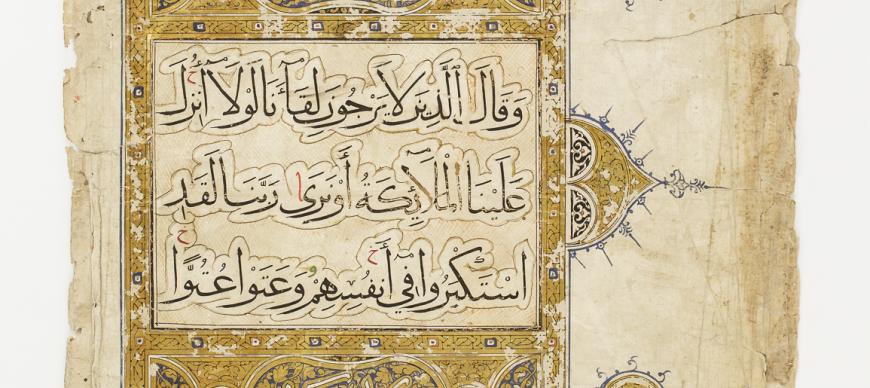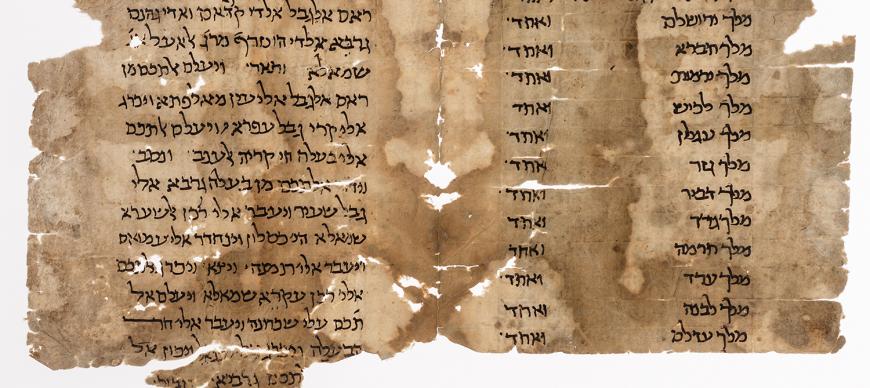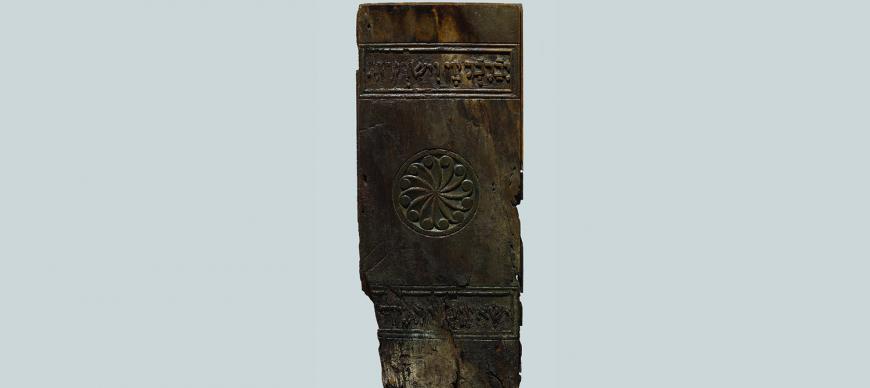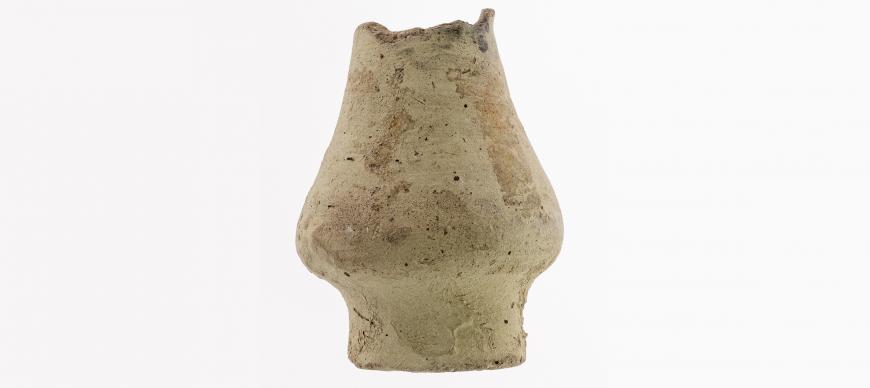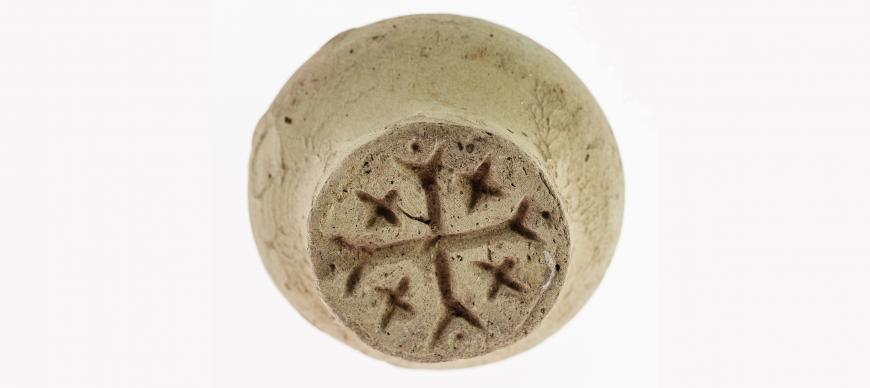This exhibition will provide visitors with the opportunity to explore the traditions of everyday life in Fustat as well through the activities, words, and beliefs of the people who lived there. Highlights of the exhibition include religious materials from all three of Fustat’s historical religious communities. This material indicated that there were a variety of languages spoken at early Fustat, including Greek, Coptic, Arabic, and Hebrew, along with other Middle Eastern languages. Although known for its collections of ancient Middle Eastern cultures, the Oriental Institute Museum also has a rich collection of Islamic materials. Only a small percentage of these artifacts have been on public view, including material from the Istakhr excavations (now on display in the Robert and Deborah Aliber Persian Gallery), the exhibition “Daily Life Ornamented: The Medieval Persian City of Rayy” (2007), and the mini-exhibition “The Silk Road and Indian Ocean Traders” (2014). This forth-coming exhibition brings well-deserved attention to Egyptian artifacts of the Oriental Institute’s Islamic collection. These objects illuminate the origins of one of the Middle East’s great urban centers, the city of Cairo.
We are proud to present the exhibition “A Cosmopolitan City: Muslims, Christians and Jews in Old Cairo,” which will run from February 17 to September 13, 2015, in the Marshall and Doris Holleb Gallery for Special Exhibits at the Oriental Institute Museum. In this exhibition, visitors will have the opportunity to explore how urban communities in this city lived together and melded their traditions to create an ever-growing, multicultural society during the seventh to twelfth centuries ad. The exhibit puts a special focus on the three main religious communities — Muslims, Chris-tians, and Jews — whose members helped shape the neighborhoods, markets, and public places of Old Cairo that still exist today.
The origins of modern Cairo go back to 642 AD, when Arab armies conquered Egypt and chose a new capital city along the Nile River. They set up their tents near the Roman military fortress of Babylon, which led to the settlement’s first name of al-Fustat, meaning “tent.” The city grew quickly and organically as Egyptians and foreigners migrated to the thriving new capital. Its neighborhoods were populated by people from a patchwork of religious and ethnic communities. Over three centuries later, in 969 AD, the sprawling city was officially designated as al-Qahira (Cairo), meaning “the Victorious.” Over time, the administrative center of the city had shifted to the north. While Fustat continued to be inhabited as port neighborhood of the larger city, areas along its edge gradually were abandoned as people moved their homes northward. By the Mamluk and Ottoman periods, parts of Fustat were used by the residents of Cairo to dump their trash.
People now designate the earliest center of urban settlement in Cairo as “Old Cairo” (or less commonly by its historical name, “Fustat”). Even now, the core of this area continues as a living neighborhood within the larger city of Cairo. It is still famous for its historical mosques, churches, and synagogues. Underneath its modern streets, and also on the outskirts of the neighborhood, lie the archaeological remains of the earliest foundations of the city. As a result, the site has been excavated a number of times, first by the Egyptian archaeologist Aly Bahgat (1912–1924) and then by George Scanlon for the American Research Center in Egypt (1964–1980). The site has continued to attract interest by Japanese, French, and Egyptian institutions, all of whom who have conducted additional excavations that add to understanding of medieval life at the site.
We were inspired to pursue this exhibition after Tasha Vorderstrasse and Donald Whitcomb conducted a systematic examination of the Islamic period collections of the Oriental Institute Museum. These explorations rediscovered a wealth of artifacts collected during Scanlon’s archaeological excavations of Fustat as well as numerous manuscripts in the Oriental Institute collection. These findings led to the idea of an exhibition that would juxtapose archaeological materials from the excavations with seldom-displayed manuscripts from medieval Egypt, including religious and administrative documents along with the earliest surviving fragment of the Arabian Nights.
This exhibition will provide visitors with the opportunity to explore the traditions of everyday life in Fustat as well through the activities, words, and beliefs of the people who lived there. Highlights of the exhibition include religious materials from all three of Fustat’s historical religious communities. This material indicated that there were a variety of languages spoken at early Fustat, including Greek, Coptic, Arabic, and Hebrew, along with other Middle Eastern languages.
Of special note will be the display of several documents from the Cairo Genizah, a repository of Jewish manuscripts from the Ben Ezra Synagogue that have been preserved for over a thousand years. Scholars now consider these documents to be one of the most important sources for understanding how people lived in the Middle East during the medieval period. They provide us with information not otherwise available in other sources, since they include letters and other documents that provide detailed information about the daily life. In the early twentieth century, some documents from the Genizah were purchased by the Dutch book dealer Erik von Scherling and then sold to the Oriental Institute in 1932. After they were purchased, these documents were not studied and seem to have been largely forgotten until the recent project rediscovered them. This exhibition will highlight several of these Genizah texts, which include parts from the Hebrew Bible and a writing exercise, reflecting the intellectual life of the Jewish community.
In order to add context to the history of the Genizah documents, visitors will also be able to view a decorated and inscribed wooden door from a Torah shrine of the Ben Ezra Synagogue. This door is now in the collection of the Walters Art Museum, Baltimore, and the Yeshiva University Museum, New York. The Torah shrine was a special cabinet in the synagogue that was meant to hold the scrolls of the Torah. It was likely constructed in the eleventh century and adorned the synagogue for many centuries. In the 1890s the Ben Ezra synagogue was refurbished, and new shrine doors of pearl inlay were installed. It is likely that the original door was placed with letters of the Genizah, since the door also was inscribed with the name of God and so was too sacred to be discarded. The door is particularly interesting from an artistic standpoint. Other than for Hebrew inscriptions, its design is similar to that in mosques and churches in medieval Egypt, showing that artistic traditions spanned religions during the “Islamic” period.
In our explorations of the Oriental Institute archives, texts were not the only things rediscovered. The upcoming exhibition also highlights numerous archaeological artifacts from the pioneering excavations at Fustat by George Scanlon fifty years ago. Most of these archaeological materials were recovered during the 1965 excavations and for many years were stored at the Princeton Art Museum. Princeton gave a selection of these objects to the Akron Art Museum, which years later donated them to the Oriental Institute.
We are fortunate to be able to display many of these artifacts publicly for the first time. Scanlon found many different types of artifacts, including items made from pottery, glass, bone, stone, and metal. The artifacts highlight the wide range of materials that were avail-able to Fustat’s residents. Fustat’s households possessed fine ceramic bowls, dishes, and cups. Its children played with toys such as dolls and other games. The collection includes artifacts that represent the city’s robust economy, including stone molds used in metalworking, objects used in textile production, reed pens used to write. Through these artifacts, visitors to the exhibit will be able to explore daily life in the early city of Fustat, such as how to start a business, what to cook for a feast, or when to send children to school.
Archaeological finds throughout Fustat suggest that its many neighborhoods were united by a common urban, cosmopolitan way of life. For instance, people throughout the city shared traditions of cooking, craftsmanship, games, and stories, no matter in what community its people belonged. In general, it is not possible to make religious distinctions based on archaeological objects alone. A few exceptions, however, include a vessel from Scanlon’s excavations with a Christian cross on the base as well as ceramic fragment showing the deposition of Christ. This deposition fragment is on loan from the Walters Art Museum and may have originated from Fustat.
While archaeological artifacts from Fustat highlight the shared lives of Fustat’s residents, the Oriental Institute object storage also contain a number of manuscripts that highlight differences between communities as well. The exhibition will display a number of exceptional documents that highlight the challenges Fustat’s governors faced in managing a diverse, multilingual society of Egypt. In order to collect taxes effectively, the governor and his officials needed to communicate effectively with a number of provinces. Many provincial administrators in this period were Coptic Christians who spoke Coptic and Greek. This meant that official communications were in multiple languages. The Oriental Institute Museum collection preserves part of the correspondence between Qurra ibn Sharik, the governor of Egypt between 709 and 714, and Basileus, the pagarch of Aphrodito in Middle Egypt. Thanks to this archive, which is scattered among a number of institutions, Qurra ibn Sharik is one of the best-known Islamic officials in Egypt.
Over time, Christian provincial of-ficials were gradually replaced with Muslim Arabs to better centralize the administration of the country. After the Islamic conquest of Egypt, Fustat’s Muslim administrators implemented a system of taxation based on religious affiliation. Muslims who lived in Fustat were not required to pay a governmental tax but instead could be drafted into military service. Non-Muslims, who included Christians and Jews, were required to pay a special tax, called jizya, in lieu of military service. Originally, a land tax was also collected from non-Muslim landowners. Later, this tax was also applied to Muslim land holders, as the numbers of Muslims holding land had increased and tax revenue was critical to the government’s functioning. Egypt was a very important tax base for the Islamic empire because of its rich resources, but high taxes meant that it also suffered from numerous revolts due to discontent over taxes, starting in the eighth century.
Beyond the realm of taxes, however, Fustat’s government took a more hands-off approach to the management of the city. Non-Muslim communities in Fustat were generally allowed freedom to worship and to impose their own community-based laws. Christian and Jewish communities for example enforced their own legal codes in disagreements among its members. In contrast, disputes between Muslims and non-Muslims remained centralized, and the case would be brought before official government courts.
We invite you to explore the historic communities of Fustat and Old Cairo further within the exhibition. Objects throughout the exhibit showcase the connections among people in these early Islamic period communities as well as highlight the challenges of negotiating a multicultural society. While the religious manuscripts in the exhibition highlight the different beliefs of Fustat’s communities, the majority of the artifacts found from excavation show a more united, shared way of life across the city. This exhibition marks the first time a museum has covered the topic of communities at Fustat using an object-based approach. The artifacts here also provide an important perspective on the history of religion and ethnicity in the Middle East, especially in consideration of con-tinuing modern tensions among Middle Eastern communities.
This exhibition will be complemented by number of in-depth talks and events, along with an academic catalog. The exhibition and programs are made possible through support from Center for Middle Eastern Studies, Divinity School, Chicago Center for Jewish Studies, and the Franke Institute for the Humanities.
By Tanya Treptow and Tasha Vorderstrasse, co-curators of the A Cosmopolitan City exhibition.
Excerpt from Oriental Institute News & Notes Quarterly Newsletter, Issue 224, Winter 2015 (Download the PDF)

